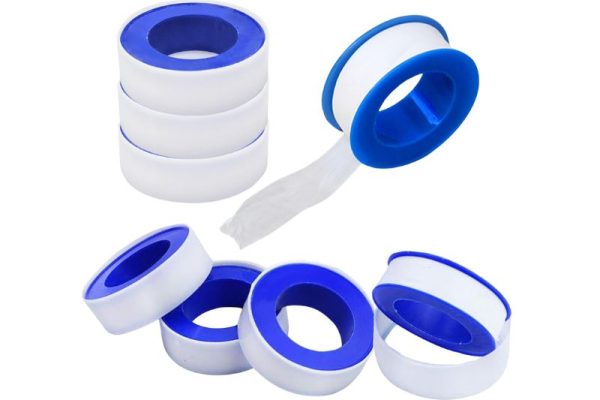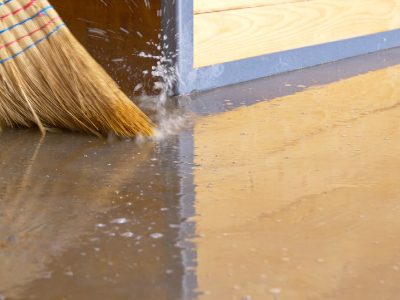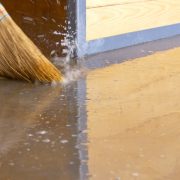The search for Telfon tape often begins with a dripping sound in the dead of night, that steady patter of water hitting tile, signaling something has gone wrong in the hidden maze of pipes behind the walls. It’s a sound that awakens primal fears — of flood, of property damage, of expensive repairs. Yet few consider how a simple white ribbon, wound carefully around threaded pipe connections, stands between them and catastrophe.
Into the Hidden World
Deep within the infrastructure of modern buildings exists a parallel universe of pressurised systems — water lines and gas pipes that course through walls like veins in a body. The joints where these pipes connect represent potential points of failure, vulnerable intersections where physics and human error meet in potentially disastrous ways.
I’ve spent hours watching seasoned plumbers in Singapore work, their weathered hands applying Teflon tape with a precision that borders on ritual. They wrap each thread in a clockwise direction, creating an overlapping spiral that forms a critical barrier against leakage. Their movements contain an economy born of experience, neither wasteful nor insufficient.
The Molecular Marvel
What appears to be a simple white ribbon harbours molecular secrets that border on the miraculous:
- Polytetrafluoroethylene molecules create one of the most slippery substances known to science
- The material remains stable at temperatures ranging from -268°C to 260°C
- It resists chemical degradation from nearly all household substances
- Its unique structure allows it to flow into microscopic imperfections in metal threads
- Unlike other sealing compounds, it won’t harden, crack, or deteriorate over decades
“Singapore’s environmental conditions present unique challenges for plumbing materials,” states a technical document from a local regulatory authority. “The combination of high humidity, temperature fluctuations, and occasional seismic activity demands sealing solutions that maintain integrity under extreme conditions.”
The Fatal Consequences of Absence
I’ve interviewed disaster restoration specialists who have witnessed the aftermath of connections made without proper thread sealing. Their accounts paint sobering pictures:
- A four-minute shower before work resulted in collapsed ceilings two floors below
- A single drop per minute accumulated to 130 litres of water damage in a single weekend away
- Gas leaks from improperly sealed connections led to evacuations of entire blocks
- Mould colonies established themselves in wall cavities within 72 hours of a minor leak
The mathematics of water damage is unforgiving. A pipe joint that releases just ten drops per minute will discharge over five litres per day — enough to warp hardwood floors, ruin drywall, and create ideal conditions for toxic mould growth.

Beyond the Bathroom: Unexpected Applications
The utility of this humble material extends far beyond residential plumbing:
- Aerospace engineers rely on it for critical oxygen system connections in aircraft
- Laboratory scientists use it to ensure vacuum integrity in sensitive experiments
- Precision machinists employ it when threading delicate components
- High-performance vehicle mechanics depend on it for fuel system integrity
- Medical equipment technicians trust it in devices where cross-contamination could prove fatal
“Our testing protocols for Teflon tape used in Singapore’s industrial applications subject samples to pressure cycling between 0 and 40 bar while exposed to saltwater spray,” notes a certification document from a materials testing laboratory. “Only products maintaining complete seal integrity throughout 10,000 cycles receive approval for marine applications.”
The Art of Application
There exists a methodology for proper application that borders on craftsmanship:
- The direction of wrapping must match the direction of thread engagement
- Optimal thickness varies by pipe diameter and substance being contained
- Coverage must extend to specific thread counts depending on pressure ratings
- Overlap percentage affects both sealing capacity and ease of disassembly
- The tension applied during wrapping determines compression characteristics
When done correctly, the material fills the spiral path between male and female threads, creating a composite seal that strengthens as pressure increases — a counterintuitive property that explains its remarkable reliability.
The Singapore Standard
The unforgiving climate of Singapore has led to the development of particularly stringent standards for plumbing materials. In a nation where ambient humidity regularly exceeds 90% and temperatures fluctuate dramatically between air-conditioned interiors and tropical exteriors, sealing materials face extraordinary challenges.
“Our revised 2023 specifications require Teflon tape used in Singapore to maintain full functionality through 15 years of accelerated aging tests,” states a document from a local standards agency. “This represents a 23% increase in durability requirements over previous standards.”
The Environmental Equation
In an age of increasing environmental awareness, the material presents an interesting paradox:
- Its chemical stability means it won’t degrade into environmental toxins
- This same stability means it remains in landfills for centuries if discarded
- Its effectiveness in preventing leaks conserves enormous quantities of water
- The manufacturing process has become increasingly clean through regulatory pressure
- Its lightweight nature minimises the transportation carbon footprint compared to alternatives
The Invisible Guardian
There is something profound about the objects we rely upon yet never see — the hidden infrastructure that enables modern existence. After the pipes are connected, the walls closed, and the paint applied, we proceed through our days unaware of the countless threaded connections sealed against failure by this unassuming material.
In a world obsessed with technological advancement, there remains something reassuring about solutions that are elegantly simple yet unfailingly effective. The next time you turn a tap and water flows predictably, consider the invisible barrier created by layers of Teflon tape, silently performing its critical function in the darkness behind your walls.














Comments